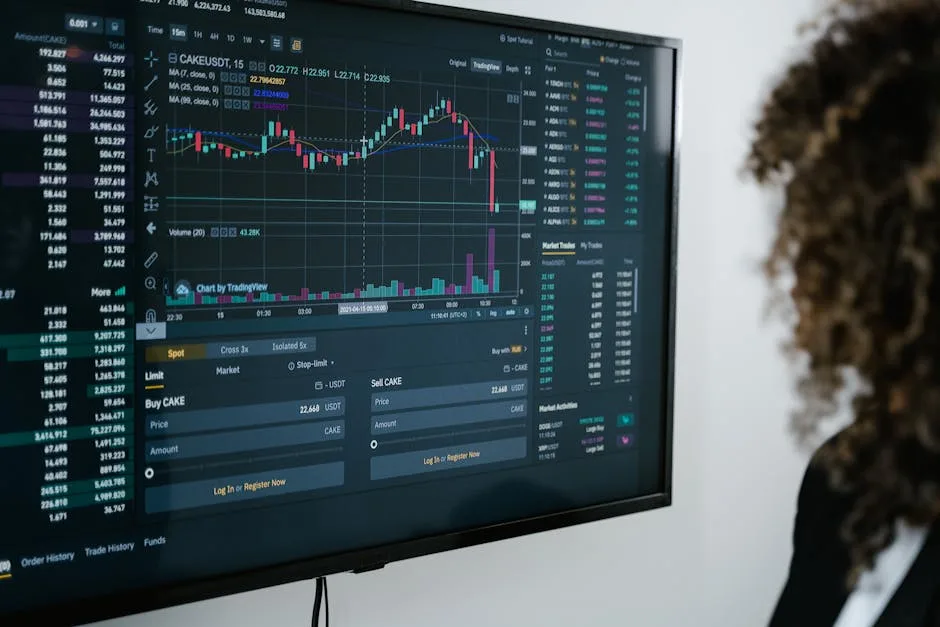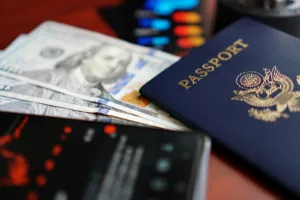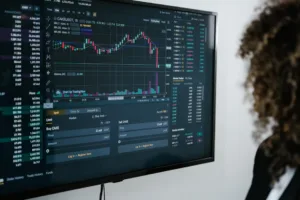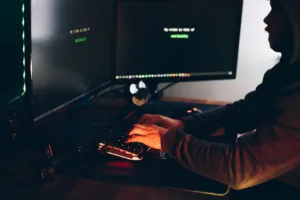
Alphabet CEO Sundar Pichai has issued a stark warning that no company would be immune from the effects of a potential artificial intelligence market bubble burst, characterizing the current AI boom as an “extraordinary moment” while acknowledging parallels to past technology investment cycles.1 This caution from one of the world’s most influential technology executives comes amid growing concerns from prominent investors and analysts about unsustainable valuations and financial practices within the AI sector.
The AI investment landscape has reached a critical juncture where massive capital deployment intersects with fundamental questions about financial sustainability and technological maturity. According to Pichai, while the underlying AI technology represents a profound advancement comparable to the internet’s early development, the current environment exhibits “some irrationality” in investment patterns that echoes the “irrational exuberance” of the dotcom era.1 This perspective is shared by other industry leaders, including Amazon’s Jeff Bezos who described the environment as “kind of an industrial bubble” and Goldman Sachs CEO David Solomon who anticipates “a lot of capital that was deployed that [doesn’t] deliver returns.”8
Investor Sentiment Shifts as Bearish Bets Emerge
Market sentiment toward AI stocks is showing clear signs of divergence as prominent investors position themselves for potential market turbulence. Michael Burry’s Scion Asset Management has revealed significant put option positions against leading AI stocks Nvidia and Palantir, signaling a direct bet on their decline.5 This bearish positioning reflects broader market concerns, with the “Buffett Indicator” (market cap to GDP) reaching 217% – above the dot-com peak – and the S&P 500’s price-book ratio at a record high according to Bank of America analysis.5 Other influential investors including Ray Dalio of Bridgewater believe the current rally is overextended and could be followed by a sharp correction, while Warren Buffett has been trimming equity exposure and maintaining record cash reserves.5
The economic impact of AI investment has become substantial, with JP Morgan’s Michael Cembalest noting that “AI-related stocks have accounted for 75% of S&P 500 returns, 80% of earnings growth and 90% of capital spending growth since ChatGPT launched.”8 This concentration creates systemic vulnerability, as Mohamed El-Erian, President of Queens’ College, Cambridge, has characterized the situation as a “rational bubble” where investors are chasing transformative technology but have been pushed “beyond their comfort zone and beyond their ability to do due diligence.”9
OpenAI Emerges as Potential Systemic Risk
Specific concerns have crystallized around OpenAI, with tech analyst Scott Galloway identifying the company as a potential trigger point for broader market disruption. Galloway asserts that a “financial collapse at generative AI leader OpenAI would trigger a systemic shock leaving ‘nowhere to hide’ for investors across the global markets.”7 This assessment aligns with Nobel Laureate Robert Shiller’s theories about narrative-driven market shocks. OpenAI’s financial position appears increasingly precarious, with the company’s spending reportedly double its revenues and CEO Sam Altman projecting spending commitments exceeding $1 trillion, creating a potential shortfall of approximately $1.2 trillion.7
OpenAI’s leadership responses to financial questions have raised additional concerns. When investor Brad Gerstner inquired about financing the massive buildout, Altman reportedly responded, “Well, if you don’t like it, you can sell your shares,” which Galloway characterized as a “horrendous… defensive, frantic, sociopathic response.”7 Further market jitters emerged when OpenAI CFO Sarah Friar told the Wall Street Journal the company was seeking federal government support as a “backstop” for future data center financing, though both Friar and Altman later walked back these remarks.7
Technical and Infrastructure Constraints
The AI boom faces significant practical constraints that could limit its growth trajectory. Pichai highlighted the “immense” energy requirements of AI systems, citing International Energy Agency data indicating AI consumed 1.5% of global electricity last year.1 This energy demand has become so substantial that Microsoft has acknowledged it doesn’t have enough electricity to install all the AI GPUs in its inventory, representing a severe physical constraint on the AI infrastructure buildout.7 The energy requirements have also impacted corporate climate goals, with Pichai admitting that Alphabet’s expanding AI operations are causing “slippage” on its climate targets, though the company maintains its 2030 net-zero commitment.1
Beyond energy constraints, fundamental questions about AI reliability persist. Pichai separately cautioned users not to “blindly trust” AI-generated answers, acknowledging the models are “prone to errors.”3 This aligns with BBC research that found significant inaccuracies in summaries produced by major AI chatbots including ChatGPT, Copilot, Gemini, and Perplexity.3 From an enterprise perspective, an MIT study cited by Yale SOM researchers found that “95% of the 52 organizations considered had achieved zero return on investment” from generative AI initiatives.8
Potential Burst Scenarios and Contagion Mechanisms
Expert analysis has identified specific mechanisms through which an AI bubble collapse could occur. Researchers from Yale School of Management and Fortune outline three primary scenarios: concentration leading to contagion, governance conflict exposing AI shortcomings, and emerging innovators’ disruptive substitutions.8 The concentration risk stems from what they term “circular deals” among tech giants, exemplified by OpenAI taking a stake in AMD while Nvidia invests $100 billion in OpenAI, with Microsoft as both a major shareholder and customer of AI cloud computing company CoreWeave, in which Nvidia also holds significant equity.8
The governance failure scenario draws parallels to the FTX collapse in cryptocurrency, where a major governance failure or a rogue AI event causing significant real-world damage could trigger a collapse in confidence. This concern is substantiated by Anthropic’s CEO estimating a “25% chance that AI will go ‘really, really badly.'”8 The technological disruption scenario suggests that breakthroughs in chip design or quantum computing could render current data center investments obsolete, similar to the overbuilding of fiber-optic cable during the dot-com bubble.8
Market Implications and Defensive Positioning
The potential market implications of an AI bubble correction are substantial given the sector’s current weighting in major indices. Galloway stressed that with 40% of the S&P 500’s value tied to the top 10 tech companies, “if they get cut in half, nobody gets out alive.”7 This systemic risk is compounded by the shift in financing mechanisms, with CNBC reporting that “debt is quietly taking over as the fuel of the boom,” as loans, bonds, and securitized financing prop up the AI infrastructure race.6
Despite these concerns, companies like Google are positioning themselves as relatively defensive within the sector. Pichai argued that Google’s ownership of a “full stack” of AI technologies – from custom chips competing with Nvidia to data and consumer products – provides resilience against market turbulence.1 This integrated approach is reflected in continued strategic investments, including Alphabet’s commitment of £5 billion to AI infrastructure and research in the UK over two years.1 However, the fundamental warning remains clear: as Pichai stated, a subsequent bust would affect every company in the sector, regardless of their individual positioning or technological assets.
Conclusion
The AI sector stands at a critical inflection point where transformative technological potential intersects with concerning financial indicators. The consensus among industry leaders, investors, and analysts suggests that while AI represents a profound technological shift comparable to the internet’s emergence, current market valuations and investment patterns exhibit characteristics of previous technology bubbles. The identification of specific risk concentrations, particularly around OpenAI’s financial sustainability, provides tangible focal points for monitoring potential market stress.
The coming months will likely test whether the AI sector can transition from speculative investment to sustainable value creation, or whether it follows the historical pattern of technology bubbles where excess investment precedes market correction. What remains clear from the warnings of industry leaders is that the outcome will have broad implications across the technology landscape and potentially throughout the global economy, validating Pichai’s assessment that no company would be immune from a significant sector downturn.
References
- “Google boss warns ‘no company is going to be immune’ if AI bubble bursts,” BBC, Nov. 18, 2025. [Online]. Available: https://www.bbc.com
- “Refined Research Data: The AI Bubble Debate Intensifies,” LinkedIn/Fortune, Nov. 11, 2025. [Online]. Available: https://www.linkedin.com/pulse/refined-research-data-ai-bubble-debate-intensifies
- “AI accuracy concerns: Google boss warns don’t ‘blindly trust’ chatbots,” BBC, Nov. 18, 2025. [Online]. Available: https://www.bbc.com
- “Public sentiment on AI bubble,” Reddit, Oct. 26, 2025. [Online]. Available: https://www.reddit.com
- “Michael Burry’s bearish bets on AI stocks,” Barchart, Nov. 14, 2025. [Online]. Available: https://www.barchart.com
- “AI euphoria gives way to concern as short sellers circle,” CNBC YouTube, Nov. 15, 2025. [Online]. Available: https://www.cnbc.com/youtube
- “OpenAI: The Epicenter of Bubble Anxiety,” LinkedIn/Fortune, Nov. 11, 2025. [Online]. Available: https://www.linkedin.com/pulse/openai-systemic-risk-scott-galloway
- “How the AI Bubble Could Burst: Three Scenarios,” Yale SOM/Fortune, Oct. 8, 2025. [Online]. Available: https://fortune.com
- “Mohamed El-Erian warns AI bubble will ‘end in tears’,” AOL, Nov. 12, 2025. [Online]. Available: https://www.aol.com






